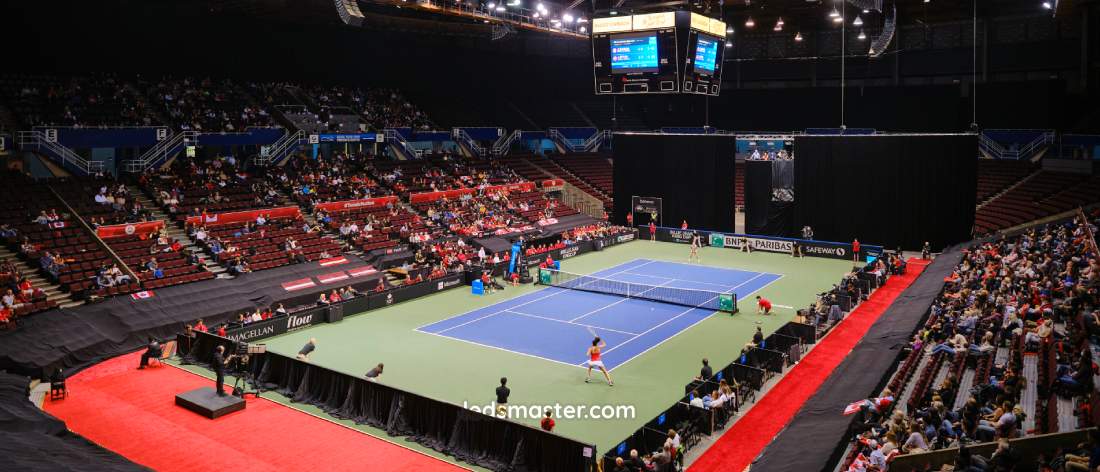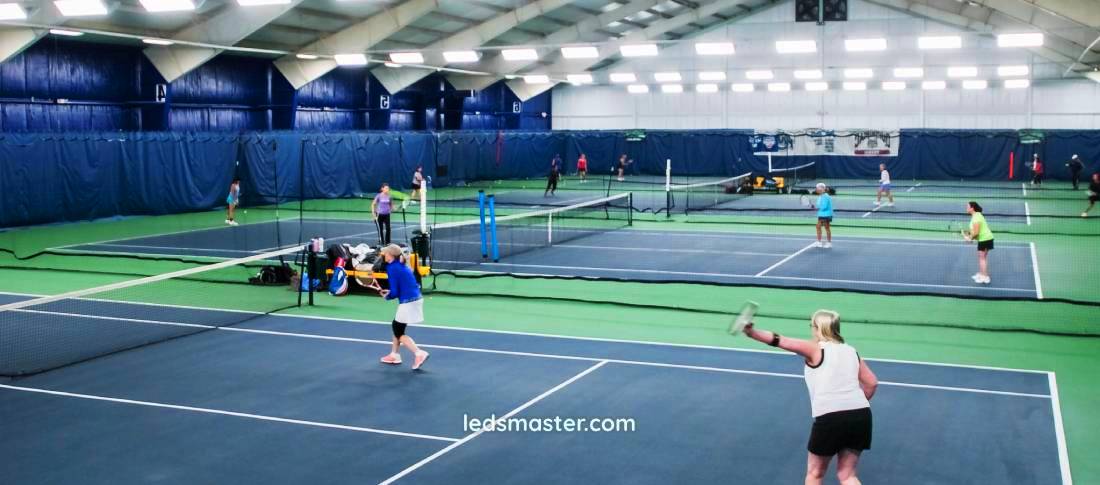Navigating the import process for tennis court lighting can be complex but essential for ensuring top-notch sports facilities. This guide highlights the key considerations, from understanding regulations and managing costs to handling logistics and verifying suppliers, providing a streamlined approach to successfully importing high-quality lighting solutions for tennis courts.
Get your complimentary lighting design today
As the demand for quality lighting solutions in sports facilities grows, understanding the intricacies of importing these products becomes essential for buyers. This article delves into the key aspects of importing tennis court lighting, focusing on regulations, costs, logistics, and supplier verification, providing a comprehensive guide for successful and compliant importation.
Table of Contents
ToggleThe foundation of a successful import process begins with a thorough understanding of the import regulations and compliance standards that are relevant to the destination country. Each country has specific requirements regarding the importation of electrical and lighting products, aimed primarily at ensuring product safety and environmental protection. Failure to comply with these regulations can lead to costly delays, fines, or even the rejection of the shipment at customs.

In many cases, international standards such as those established by the International Electrotechnical Commission (IEC) serve as the baseline for product safety and performance. These standards ensure that lighting products are designed and manufactured to meet minimum safety requirements. However, it’s not enough to rely solely on these global standards. Many countries have additional local regulations that govern the import of lighting products, which must also be adhered to.
For example, the European Union has stringent regulations for electrical and lighting products, requiring them to meet safety, environmental, and energy efficiency standards. Similarly, countries in North America, Asia, and other regions may have their own unique set of rules that importers must follow. Understanding both global and local standards is vital to ensure the products meet all legal requirements.
Most countries require that lighting products are certified before they can be legally imported and sold within their borders. These certifications verify that the products meet the relevant safety and environmental standards.
In Europe, lighting products must carry a CE marking, which indicates compliance with the health, safety, and environmental protection directives of the European Union. Without this marking, products cannot be legally sold in the EU. In the United States, products often need to be UL certified, demonstrating compliance with U.S. safety standards for electrical equipment. Other regions may have similar certification requirements, such as the SAA in Australia or the CCC in China. Obtaining these certifications before the products are shipped is essential to avoid delays and penalties.
Without the proper documentation, shipments may be delayed or rejected at customs. Buyers must ensure that all necessary certificates, invoices, and forms are completed accurately and submitted on time.
The specific documentation required for importing lighting products will vary depending on the country, but common documents include commercial invoices, certificates of origin, packing lists, and safety or environmental compliance certificates. Having all the required paperwork prepared in advance will help avoid complications when the products arrive at their destination.
Tariffs and import duties are taxes imposed by governments on goods that are imported into the country. These fees are typically based on the product’s classification, country of origin, and trade agreements between the exporting and importing nations. Understanding the financial impact of these costs is critical for buyers, as they can significantly affect the overall budget of the project.
Tariffs on lighting products can vary widely depending on where the products are being shipped from and the importing country’s specific rules. Some countries have free trade agreements in place that reduce or eliminate tariffs on certain goods. For example, products imported between countries that are part of a free trade zone may be exempt from tariffs or subject to reduced rates.
Buyers need to research the specific tariff rates for their products and ensure that these costs are factored into the overall budget. In some cases, these tariffs can make a significant difference in the final cost of the project.
In addition to tariffs, other costs associated with the importation of lighting products include import duties, taxes, and fees for customs clearance. Buyers must conduct a thorough cost analysis that includes all these additional charges to accurately estimate the total investment required. Failure to account for these costs can lead to budget overruns and affect the overall success of the project.
To manage these financial aspects effectively, many buyers engage the services of a customs broker or international trade expert. These professionals can provide detailed information about applicable tariffs and duties, helping buyers avoid costly mistakes and streamline the import process.
Once the regulatory and financial aspects have been addressed, the next step in the process is managing shipping and logistics. Transporting tennis court lighting products across borders can be a complex task, particularly given the size and fragility of the fixtures. Choosing the right shipping method and ensuring the products are safely packed and transported is essential to avoid delays or damage.
There are two primary shipping options for importing lighting products: air freight and ocean freight. Each has its advantages and disadvantages, depending on the specific needs of the project.
Air freight is faster, making it the preferred choice for buyers who need their products quickly. However, it is significantly more expensive than ocean freight, especially for larger shipments. Air freight is typically used for smaller, high-priority orders where speed is a crucial factor.
On the other hand, ocean freight is more cost-effective for larger orders, particularly when the buyer is importing multiple lighting fixtures or other large equipment. However, the transit time is much longer, and buyers must plan accordingly to ensure that the products arrive in time for installation. The choice between air and ocean freight will depend on the project’s timeline and budget constraints.
Proper packaging is critical when shipping lighting products, as they are often fragile and can be easily damaged during transit. Tennis court lighting fixtures, in particular, are large and contain delicate components such as bulbs, reflectors, and electrical wiring.
Manufacturers and suppliers must follow best practices for packaging to ensure that the products are adequately protected. This typically involves using reinforced packaging materials, shock absorbers, and protective coverings to prevent damage. Buyers should work closely with their suppliers and logistics providers to ensure that the products are properly packaged before shipment.
Once the products are on their way, it is important to keep track of the shipment’s progress. Clear communication with the shipping provider is necessary to stay updated on the estimated delivery times and to be alerted about any potential delays.
Delays in shipping can have a significant impact on the project timeline, particularly if the lighting products are required for a specific installation date. Buyers should establish contingency plans to accommodate any unforeseen shipping delays, ensuring that the overall project stays on track.

Customs clearance is one of the final steps in the import process and can be one of the most challenging. This phase involves submitting the necessary documentation and ensuring that all applicable taxes and duties are paid before the goods are released for delivery.
Customs clearance can be a complicated and time-consuming process, especially for buyers who are unfamiliar with the specific requirements of the importing country. Customs brokers can help streamline this process by ensuring that all necessary documents are submitted and that any duties or taxes are paid on time.
Customs brokers are experts in navigating the rules and regulations of different countries, and their expertise can help prevent delays and avoid fines. By working with a customs broker, buyers can ensure that their shipments are cleared quickly and efficiently, allowing them to focus on other aspects of the project.
The documents required for customs clearance can vary depending on the country, but some key documents are typically necessary across most regions. One of the most important documents is the commercial invoice, which provides a detailed account of the goods being imported, including their value and the specific terms of sale agreed upon by the buyer and the seller. Another essential document is the certificate of origin. This certificate verifies where the products were manufactured and is often required to determine the correct tariff rates for the shipment.
In addition to these, a packing list is usually needed. The packing list gives a breakdown of the shipment’s contents, specifying the number of items, their weight, and the details of how they are packed. This helps customs officials ensure that the shipment matches the documentation provided. Finally, compliance certificates are crucial. These certificates prove that the lighting products meet local safety, environmental, or energy efficiency standards, and they are often required to ensure that the products can legally enter the destination country. Having all these documents in order helps streamline the customs clearance process and avoids unnecessary delays.
In many cases, customs duties and taxes must be paid before the goods can be cleared for delivery. These fees are based on the product’s classification and can vary depending on the country’s tariff schedule. Buyers should be prepared to make these payments promptly to avoid delays.
Having all necessary documents and payments in order ensures a smoother customs clearance process, allowing the lighting products to be released for delivery without unnecessary hold-ups.
The quality of the tennis court lighting products will largely depend on the credibility and reliability of the manufacturer. Importing substandard products can lead to significant issues down the line, affecting both the performance of the lighting and the overall success of the project.
Before selecting a supplier, buyers should conduct thorough research into the manufacturer’s background and track record. This includes checking certifications, reading customer reviews, and verifying the supplier’s compliance with relevant safety and environmental standards.
Requesting references from previous customers can also provide valuable insights into the supplier’s reliability and product quality. Factory audits or site visits, if feasible, can offer additional assurance that the manufacturer adheres to high production standards and uses quality materials.
Establishing long-term relationships with reliable suppliers can lead to consistent product quality and better pricing over time. A trusted supplier who understands the buyer’s market and requirements can help customize products to meet local standards and preferences. Building a strong relationship with a reliable supplier simplifies future orders and ensures that buyers receive consistent quality in their lighting products.
Another key consideration when importing tennis court lighting is managing lead times. The time it takes for products to be manufactured, shipped, and cleared through customs can vary widely depending on factors such as the supplier’s production capacity, shipping method, and customs procedures.
To manage lead times effectively, buyers should maintain regular communication with their suppliers. This includes receiving updates on the production schedule, shipping dates, and expected delivery times. Proactive communication helps buyers adjust their project timelines as needed and avoid disruptions.
Delays are common in international trade, whether due to manufacturing issues, shipping delays, or customs clearance problems. Buyers should anticipate these potential delays and build flexibility into their project schedules. Having contingency plans in place ensures that the project can continue even if there are unexpected hold-ups.
Importing tennis court lighting is a complex, multifaceted process that requires careful planning and attention to detail at every stage. From understanding and complying with local and international regulations to managing shipping logistics and verifying supplier credibility, each aspect of the process plays a crucial role in ensuring the success of the project. By preparing thoroughly and addressing potential challenges early on, buyers can streamline the import process, avoid unnecessary delays, and ensure that their lighting systems meet the necessary standards. Whether importing for a small tennis court or a large sports complex, the right approach to importing lighting products can significantly enhance the quality of the facility, providing reliable and effective illumination for athletes and spectators alike.